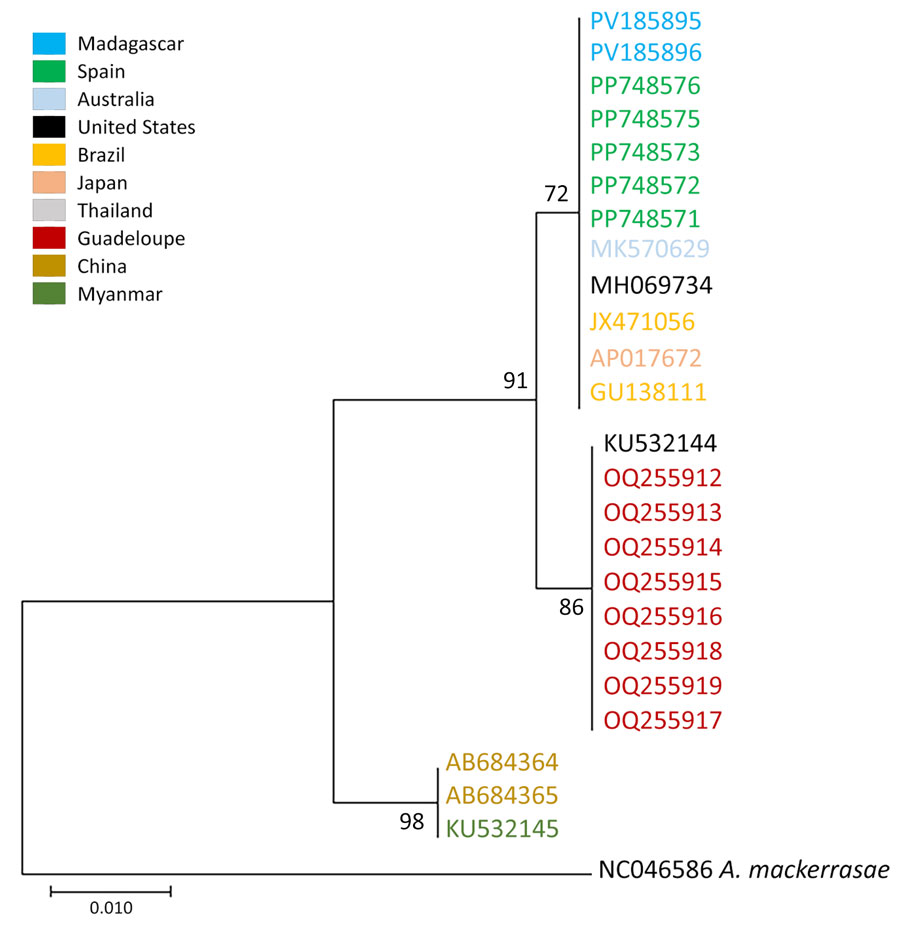Volume 31, Number 10—October 2025
Research Letter
Angiostrongylus cantonensis Lungworms in Definitive and Intermediate Hosts, Madagascar, 2024
Figure 2

Figure 2. Phylogeny of adult Angiostrongylus cantonensis lungworm based on cytochrome c sequences in definitive and intermediate hosts, Madagascar, 2024. Labels are GenBank accession numbers, colored by location. The phylogenetic tree was constructed using the Tamura-Nei 1993 plus gamma distribution model with 10,000 iterations in MEGA X (https://www.megasoftware.net). All bootstrap values are shown on corresponding nodes. Angiostrongylus mackerrasae was used as the outgroup. Scale bar indicates number of substitutions per site.
1These authors contributed equally to this article.
Page created: August 13, 2025
Page updated: September 25, 2025
Page reviewed: September 25, 2025
The conclusions, findings, and opinions expressed by authors contributing to this journal do not necessarily reflect the official position of the U.S. Department of Health and Human Services, the Public Health Service, the Centers for Disease Control and Prevention, or the authors' affiliated institutions. Use of trade names is for identification only and does not imply endorsement by any of the groups named above.